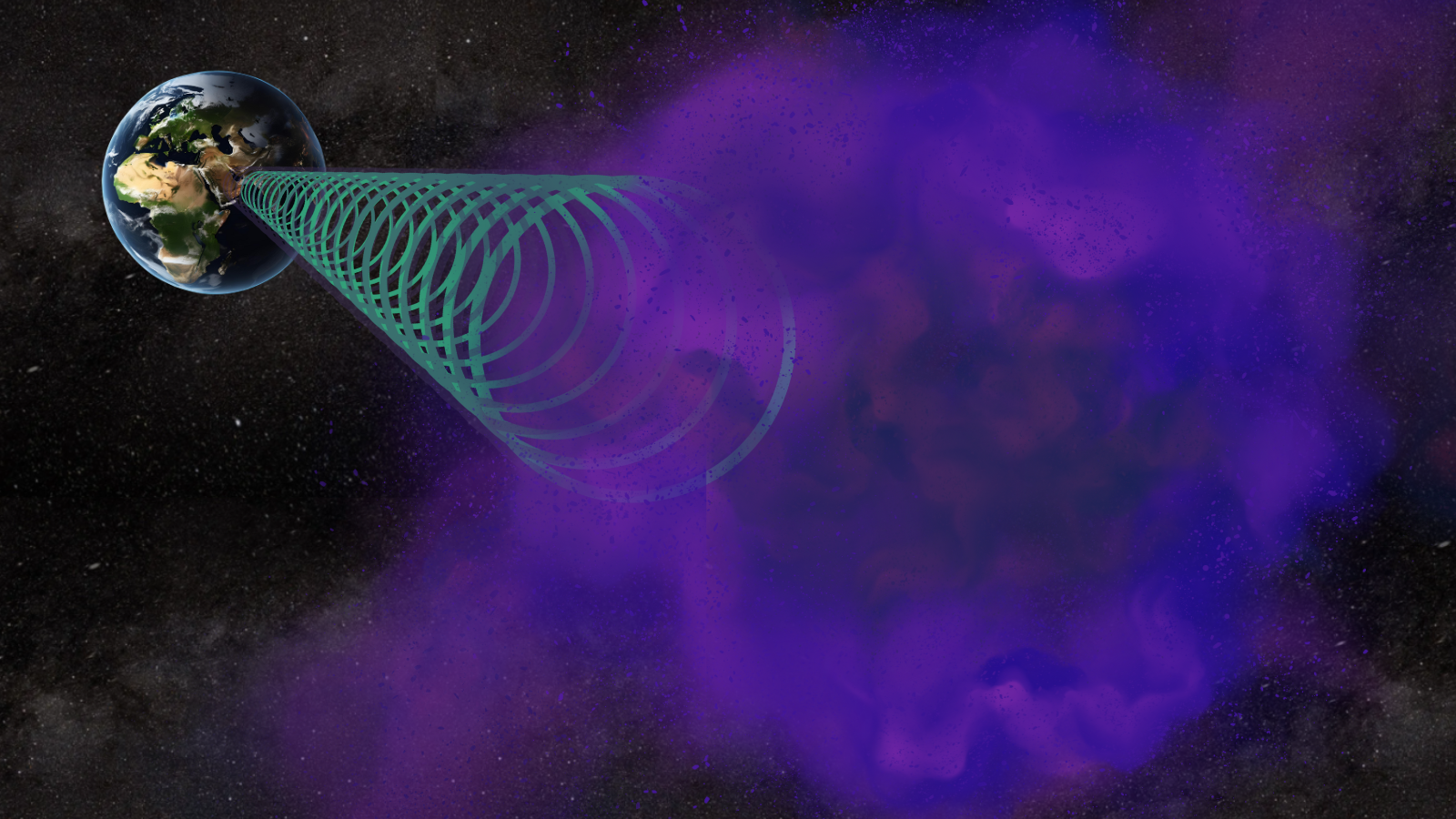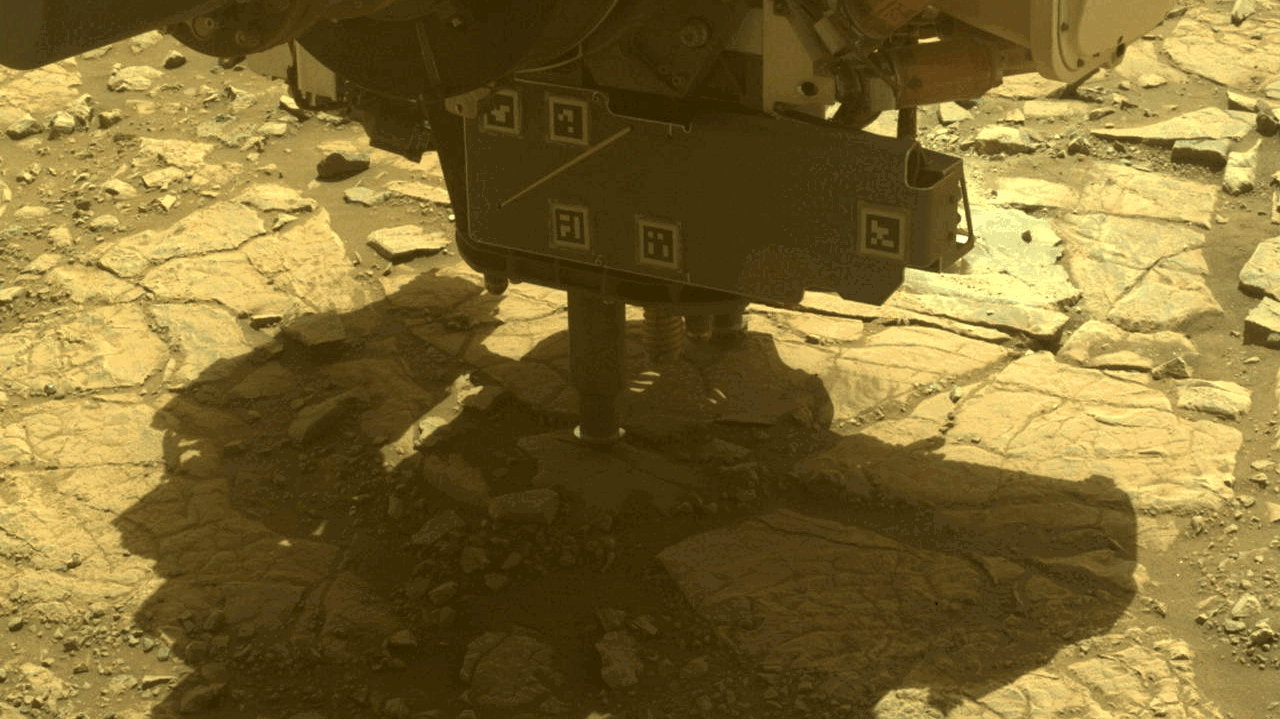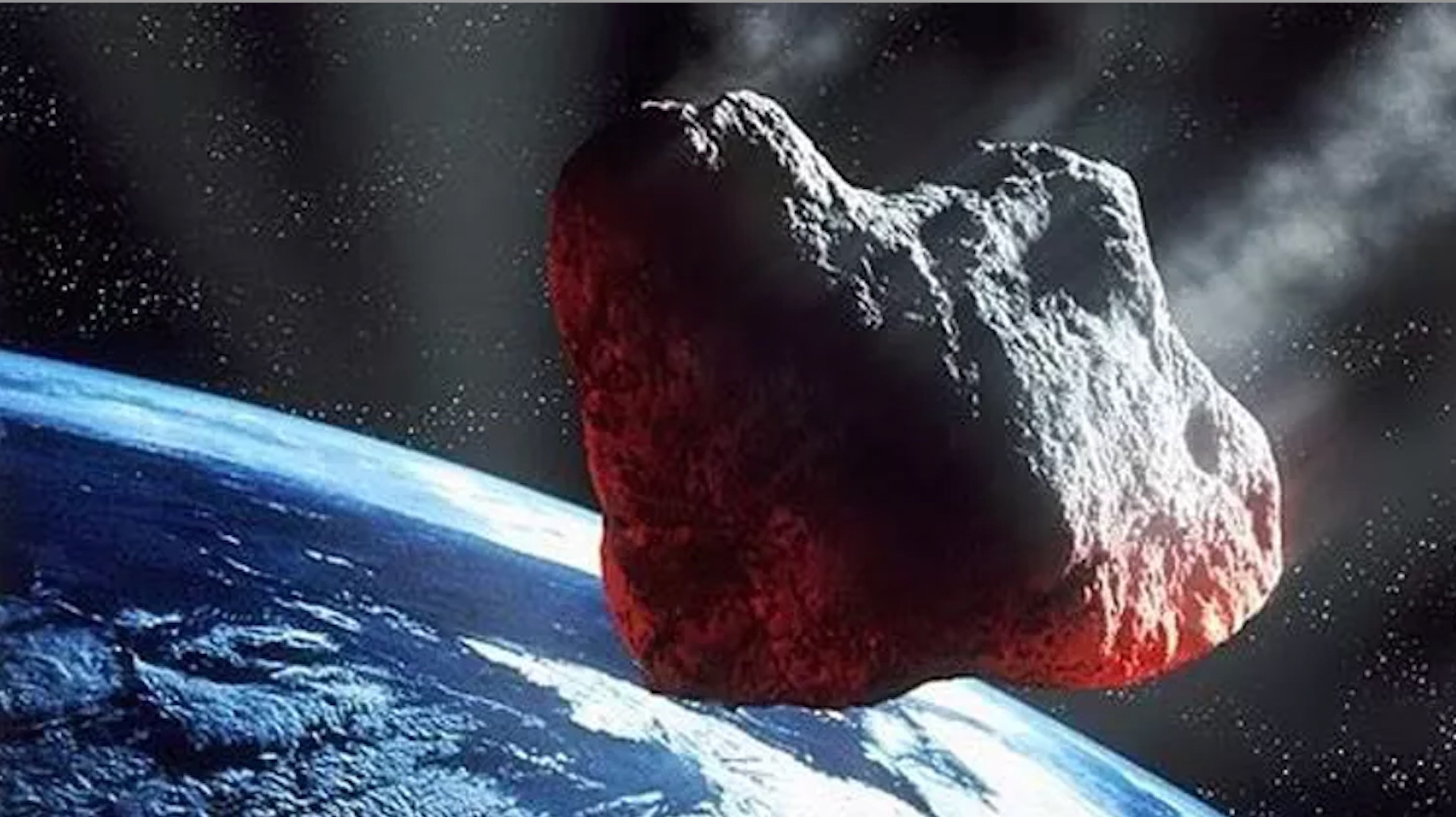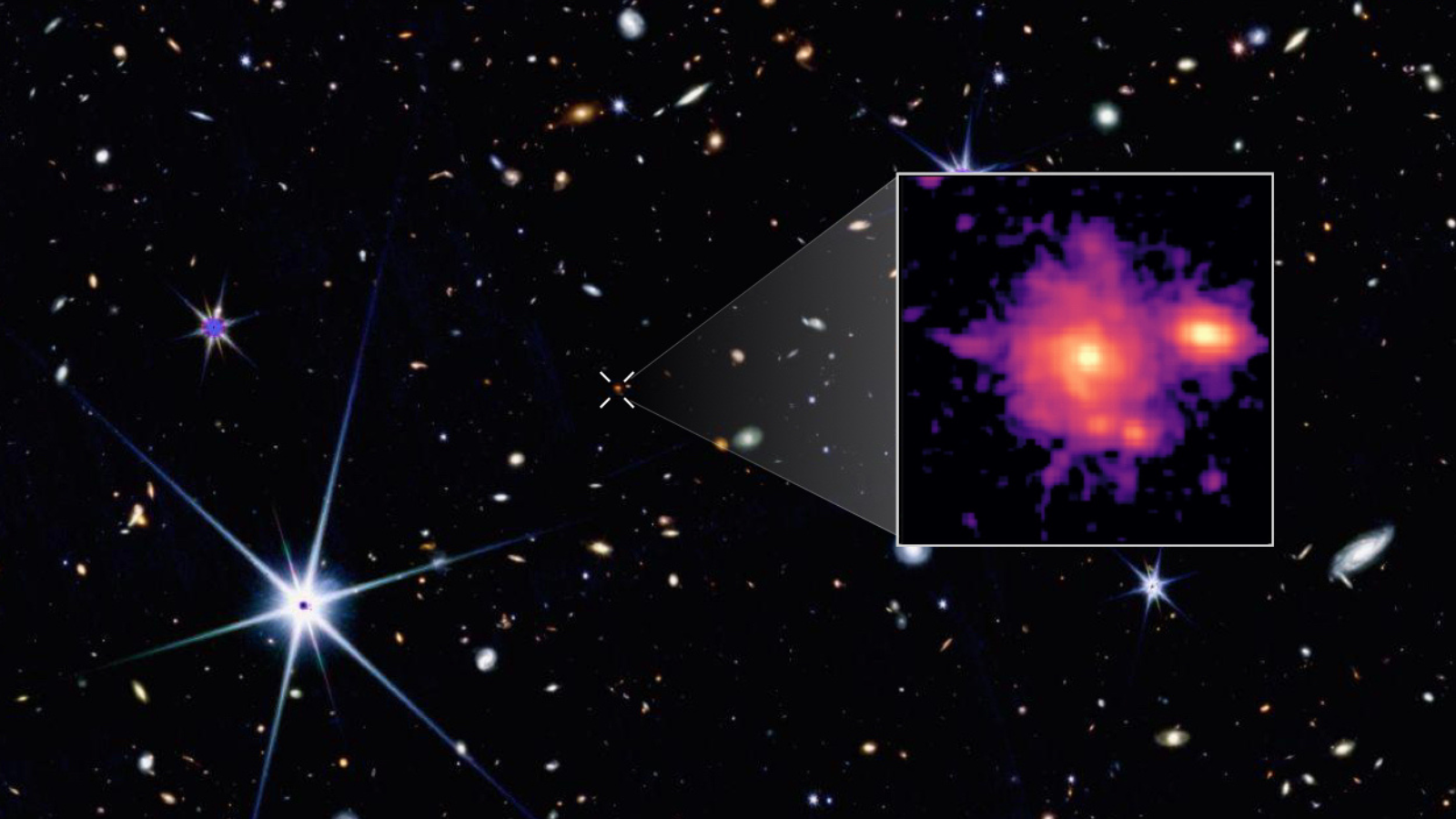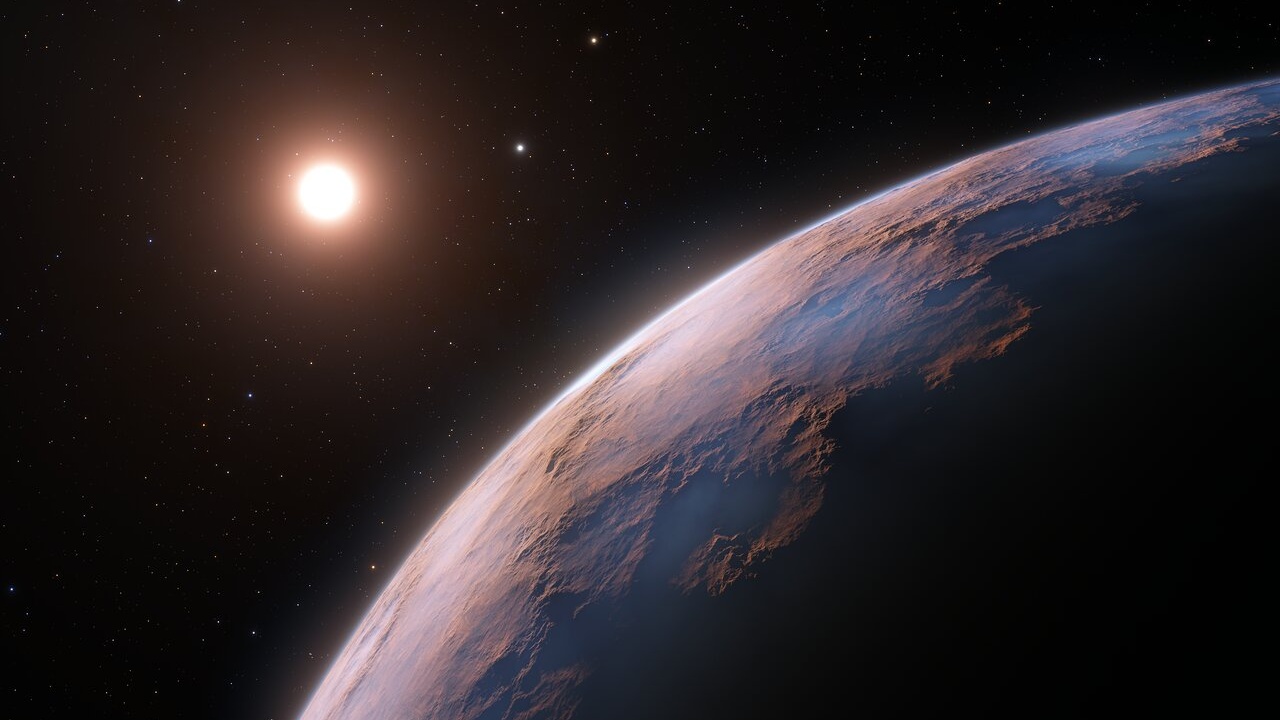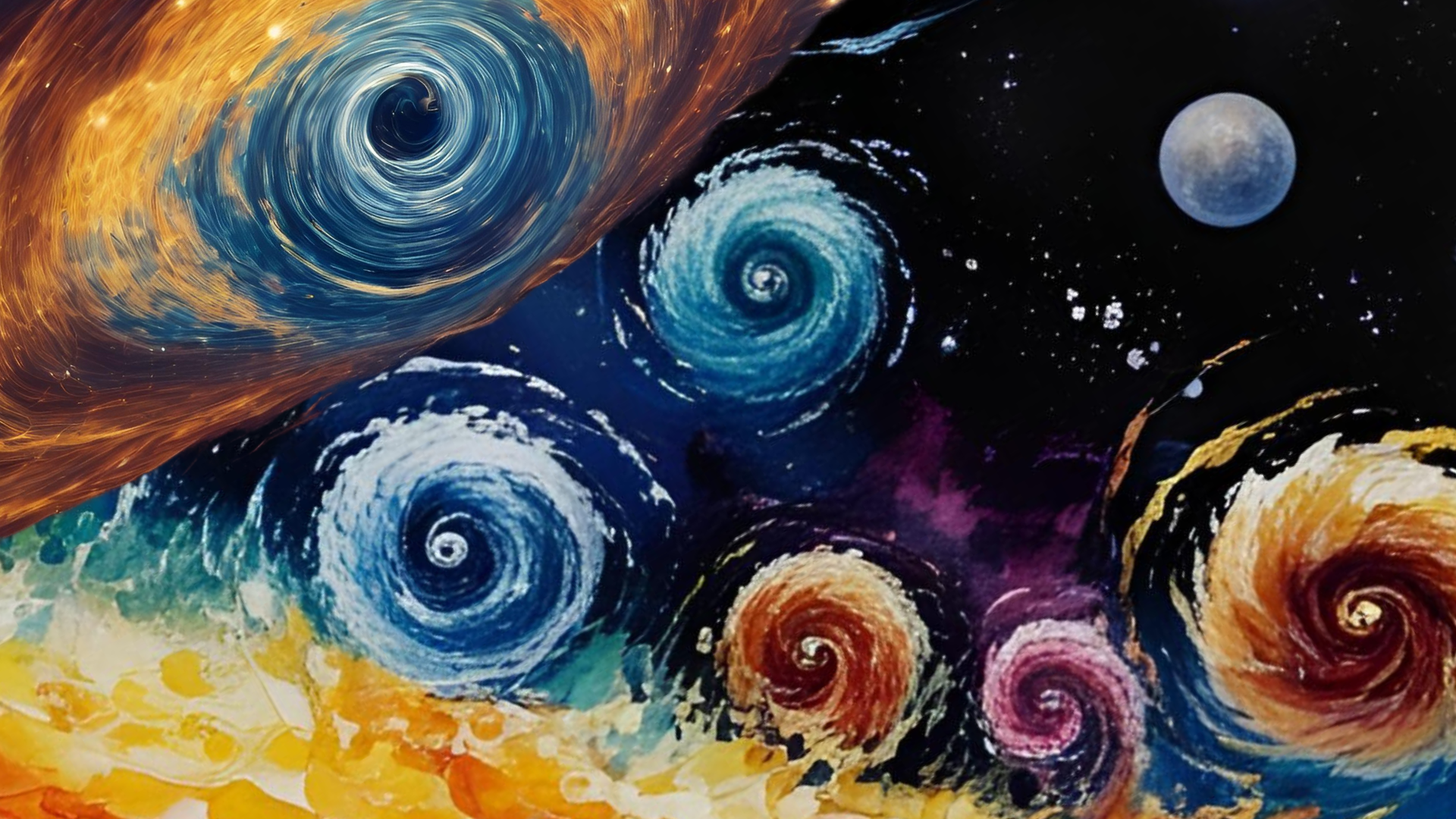
Extraterrestrial life may look nothing like life on Earth − so astrobiologists are coming up with a framework to study how complex systems evolve
How do you look for alien life when you don’t know what alien life might look like?

This article was originally published at The Conversation. The publication contributed the article to Space.com's Expert Voices: Op-Ed & Insights.
We have only one example of biology forming in the universe – life on Earth. But what if life can form in other ways? How do you look for alien life when you don’t know what alien life might look like?
These questions are preoccupying astrobiologists, who are scientists who look for life beyond Earth. Astrobiologists have attempted to come up with universal rules that govern the emergence of complex physical and biological systems both on Earth and beyond.
I’m an astronomer who has written extensively about astrobiology. Through my research, I’ve learned that the most abundant form of extraterrestrial life is likely to be microbial, since single cells can form more readily than large organisms. But just in case there’s advanced alien life out there, I’m on the international advisory council for the group designing messages to send to those civilizations.
Detecting life beyond Earth
Since the first discovery of an exoplanet in 1995, over 5,000 exoplanets, or planets orbiting other stars, have been found.
Many of these exoplanets are small and rocky, like Earth, and in the habitable zones of their stars. The habitable zone is the range of distances between the surface of a planet and the star it orbits that would allow the planet to have liquid water, and thus support life as we on Earth know it.
The sample of exoplanets detected so far projects 300 million potential biological experiments in our galaxy – or 300 million places, including exoplanets and other bodies such as moons, with suitable conditions for biology to arise.
Get the Space.com Newsletter
Breaking space news, the latest updates on rocket launches, skywatching events and more!
The uncertainty for researchers starts with the definition of life. It feels like defining life should be easy, since we know life when we see it, whether it’s a flying bird or a microbe moving in a drop of water. But scientists don’t agree on a definition, and some think a comprehensive definition might not be possible.
NASA defines life as a “self-sustaining chemical reaction capable of Darwinian evolution.” That means organisms with a complex chemical system that evolve by adapting to their environment. Darwinian evolution says that the survival of an organism depends on its fitness in its environment.
The evolution of life on Earth has progressed over billions of years from single-celled organisms to large animals and other species, including humans.
Exoplanets are remote and hundreds of millions of times fainter than their parent stars, so studying them is challenging. Astronomers can inspect the atmospheres and surfaces of Earth-like exoplanets using a method called spectroscopy to look for chemical signatures of life.
Spectroscopy might detect signatures of oxygen in a planet’s atmosphere, which microbes called blue-green algae created by photosynthesis on Earth several billion years ago, or chlorophyll signatures, which indicate plant life.
NASA’s definition of life leads to some important but unanswered questions. Is Darwinian evolution universal? What chemical reactions can lead to biology off Earth?
Evolution and complexity
All life on Earth, from a fungal spore to a blue whale, evolved from a microbial last common ancestor about 4 billion years ago.
The same chemical processes are seen in all living organisms on Earth, and those processes might be universal. They also may be radically different elsewhere.
In October 2024, a diverse group of scientists gathered to think outside the box on evolution. They wanted to step back and explore what sort of processes created order in the universe – biological or not – to figure out how to study the emergence of life totally unlike life on Earth.
Two researchers present argued that complex systems of chemicals or minerals, when in environments that allow some configurations to persist better than others, evolve to store larger amounts of information. As time goes by, the system will grow more diverse and complex, gaining the functions needed for survival, through a kind of natural selection.
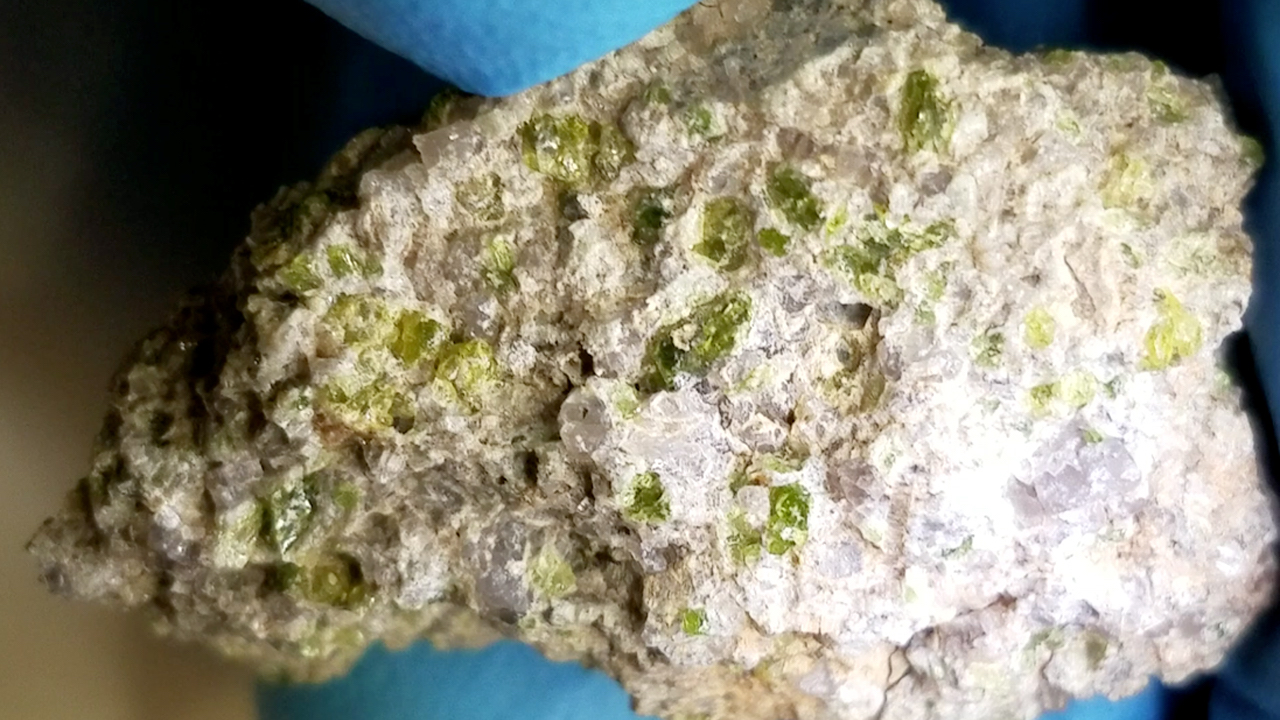
They speculated that there might be a law to describe the evolution of a wide variety of physical systems. Biological evolution through natural selection would be just one example of this broader law.
In biology, information refers to the instructions stored in the sequence of nucleotides on a DNA molecule, which collectively make up an organism’s genome and dictate what the organism looks like and how it functions.
If you define complexity in terms of information theory, natural selection will cause a genome to grow more complex as it stores more information about its environment.
Complexity might be useful in measuring the boundary between life and nonlife.
However, it’s wrong to conclude that animals are more complex than microbes. Biological information increases with genome size, but evolutionary information density drops. Evolutionary information density is the fraction of functional genes within the genome, or the fraction of the total genetic material that expresses fitness for the environment.
Organisms that people think of as primitive, such as bacteria, have genomes with high information density and so appear better designed than the genomes of plants or animals.
A universal theory of life is still elusive. Such a theory would include the concepts of complexity and information storage, but it would not be tied to DNA or the particular kinds of cells we find in terrestrial biology.
Implications for the search for extraterrestrial life
Researchers have explored alternatives to terrestrial biochemistry. All known living organisms, from bacteria to humans, contain water, and it is a solvent that is essential for life on Earth. A solvent is a liquid medium that facilitates chemical reactions from which life could emerge. But life could potentially emerge from other solvents, too.
Astrobiologists Willam Bains and Sara Seager have explored thousands of molecules that might be associated with life. Plausible solvents include sulfuric acid, ammonia, liquid carbon dioxide and even liquid sulfur.
Alien life might not be based on carbon, which forms the backbone of all life’s essential molecules – at least here on Earth. It might not even need a planet to survive.
Advanced forms of life on alien planets could be so strange that they’re unrecognizable. As astrobiologists try to detect life off Earth, they’ll need to be creative.
One strategy is to measure mineral signatures on the rocky surfaces of exoplanets, since mineral diversity tracks terrestrial biological evolution. As life evolved on Earth, it used and created minerals for exoskeletons and habitats. The hundred minerals present when life first formed have grown to about 5,000 today.
For example, zircons are simple silicate crystals that date back to the time before life started. A zircon found in Australia is the oldest known piece of Earth’s crust. But other minerals, such as apatite, a complex calcium phosphate mineral, are created by biology. Apatite is a primary ingredient in bones, teeth and fish scales.
Another strategy to finding life unlike that on Earth is to detect evidence of a civilization, such as artificial lights, or the industrial pollutant nitrogen dioxide in the atmosphere. These are examples of tracers of intelligent life called technosignatures.
It’s unclear how and when a first detection of life beyond Earth will happen. It might be within the solar system, or by sniffing exoplanet atmospheres, or by detecting artificial radio signals from a distant civilization.
The search is a twisting road, not a straightforward path. And that’s for life as we know it – for life as we don’t know it, all bets are off.
This article was originally published on The Conversation. Read the original article. Follow all of the Expert Voices issues and debates — and become part of the discussion — on Facebook, Twitter and Google +. The views expressed are those of the author and do not necessarily reflect the views of the publisher. This version of the article was originally published on Space.com.
Join our Space Forums to keep talking space on the latest missions, night sky and more! And if you have a news tip, correction or comment, let us know at: community@space.com.

Chris Impey is a University Distinguished Professor of Astronomy at the University of Arizona, where his research focuses on observational cosmology, galaxies, and quasars. A dedicated astronomer, he loves to study, write, and teach about cosmology and has numerous publications, science books, and teaching awards under his belt. Chris is also the creator of the astronomy learning tool Teach Astronomy.
-
rod Charles Darwin in his 1871 letter looked to the warm little pond for the origin of life from non-living matter and in 1882, hoped someday a natural law would be developed describing how non-living matter evolves into life. Astrobiology apparently has not accomplished this at present.Reply
This site shows 7378 exoplanets confirmed now, https://exoplanet.eu/home/
928 show radii 1.5 or less earth size, most orbit very close to the parent star, average 0.0736 au.
The NASA site, https://exoplanetarchive.ipac.caltech.edu/index.html, 5806 confirmed.
279 have radii 1.1 or less earth size. No exoplanets confirmed to date have been shown to have life on them or ET phoning home :) -
rod I note here a report on the early Moon and how rapidly it separated from the early earth.Reply
https://phys.org/news/2024-12-early-earth-oceans-magma-moon.html
ref - Tides on Lava Worlds: Application to Close-in Exoplanets and the Early Earth-Moon System, https://arxiv.org/abs/2412.07285, 10-Dec-2024. “Understanding the physics of planetary magma oceans has been the subject of growing efforts, in light of the increasing abundance of Solar system samples and extrasolar surveys. A rocky planet harboring such an ocean is likely to interact tidally with its host star, planetary companions, or satellites. To date, however, models of the tidal response and heat generation of magma oceans have been restricted to the framework of weakly viscous solids, ignoring the dynamical fluid behavior of the ocean beyond a critical melt fraction. Here we provide a handy analytical model that accommodates this phase transition, allowing for a physical estimation of the tidal response of lava worlds. We apply the model in two settings: The tidal history of the early Earth-Moon system in the aftermath of the giant impact; and the tidal interplay between short-period exoplanets and their host stars. For the former, we show that the fluid behavior of the Earth's molten surface drives efficient early Lunar recession to ∼25 Earth radii within 10^4−10^5 years, in contrast with earlier predictions. For close-in exoplanets, we report on how their molten surfaces significantly change their spin-orbit dynamics, allowing them to evade spin-orbit resonances and accelerating their track towards tidal synchronization from a Gyr to Myr timescale. Moreover, we re-evaluate the energy budgets of detected close-in exoplanets, highlighting how the surface thermodynamics of these planets are likely controlled by enhanced, fluid-driven tidal heating, rather than vigorous insolation, and how this regime change substantially alters predictions for their surface temperatures.”
My note. Astrobiology has many hurdles and challenges it seems to show how life evolves from non-living matter, here on Earth and on other worlds too. -
bwana4swahili Reply
If a civilization survives past the Fermi Paradox it is very possible it will evolve into a pure energy form. We may be surrounded by 'aliens' and not even know it!?Admin said:We have only one example of biology forming in the universe – life on Earth. But what if life can form in other ways?
Extraterrestrial life may look nothing like life on Earth − so astrobiologists are coming up with a framework to study how complex systems evolve : Read more -
Aplu Way back when I was knee-high to a grasshopper, my parents invested in a science encyclopedia, and it had an intriguing entry on the possible forms life might take on other planets. It mentioned a silicate biology; I've seen others, primarily in works written or inspired by Arthr C. Clarke, that suggest methane as the operative solvent. I've been disappointed in the SF on the big and small screens, which ignores the possibility of such diversity, leaving us with Klingons and Alf as the width of their vision.Reply -
Unclear Engineer One thing that may be wrong with this article is the part about the "information density" in DNA of various life forms on Earth. That seems to be based on how much of the DNA the authors consider to be manifesting itself in the actual functions of the organism, and how much they consider to be "junk" DNA that has no function (that they know about).Reply
But, some recent research suggests that what has been called "junk DNA" is not really just useless junk. It seems that it does exert some influence on how potentially "functional" DNA is "expressed" or "suppressed" in the resulting organism.
Further, it is speculated that the "junk" DNA contains information that helps organisms adapt to different environments, so that adaptation does not depend on random mistakes in reproduction to lead to changes that are mostly ineffective, with some eventually resulting in effective adaptation. If the "junk DNA" provides the historical information of previously successful adaptations to previous environments experienced by the organisms ancestors, that would allow the organisms to adapt much more rapidly to environment changes. And that ability would give them an advantage in survival competition.
And that concept seems to be much more consistent with the theme of this article about the successive accumulation of information by successful organisms. -
bwana4swahili Reply
You should see the movie Arrival. Quite good in this respect.Aplu said:Way back when I was knee-high to a grasshopper, my parents invested in a science encyclopedia, and it had an intriguing entry on the possible forms life might take on other planets. It mentioned a silicate biology; I've seen others, primarily in works written or inspired by Arthr C. Clarke, that suggest methane as the operative solvent. I've been disappointed in the SF on the big and small screens, which ignores the possibility of such diversity, leaving us with Klingons and Alf as the width of their vision. -
George² Reply
Little above DNA we have:Unclear Engineer said:But, some recent research suggests that what has been called "junk DNA" is not really just useless junk. It seems that it does exert some influence on how potentially "functional" DNA is "expressed" or "suppressed" in the resulting organism.
Thoroughly revised estimates show that the typical adult human body consists of about 30 trillion human cells and about 38 trillion bacteria.
More here. -
AboveAndBeyond Reply
I'm sure you probably know the warm little pond (or tidal pool) has fallen out of favor.rod said:Charles Darwin in his 1871 letter looked to the warm little pond for the origin of life...
People now seem to place more stock in undersea hot smokers, or possibly formation on Mars and then transport here via meteorite.
Experiments with the equivalent of a warm pond or tidal pool have failed to create anything recognizably alive. -
Unclear Engineer Part of the problem with "lab experiments" that try to create life is that none have yet been performed for a billion years.Reply -
rod All lab experiments attempting to show how non-living matter evolved into the first cell with RNA and DNA, do not recreate the astronomical catastrophism used today in solar system science for the early solar system. Charles Darwin in his 1871 letter about the warm little pond, did not use catastrophic bombardment or volcanic eruptions to explain his warm little pond and scenario for the origin of life via abiogenesis. NASA astrobiology still references the warm little pond, https://astrobiology.nasa.gov/news/exposed-in-a-warm-little-pond/Reply
In 1882, Charles Darwin was still looking for life to be confirmed via what we call abiogenesis today and a law of nature to describe that. Darwin Correspondence Project, https://www.darwinproject.ac.uk/letters

